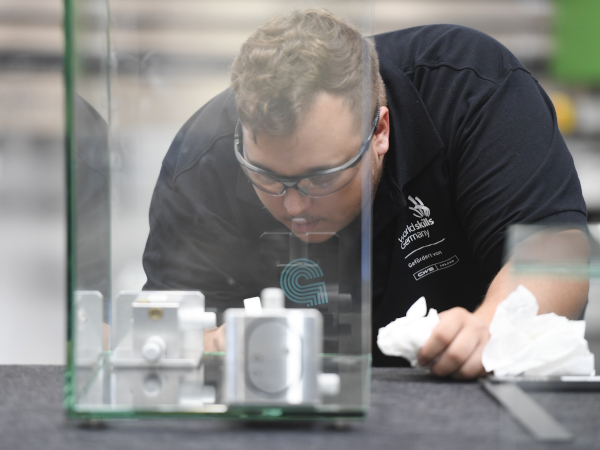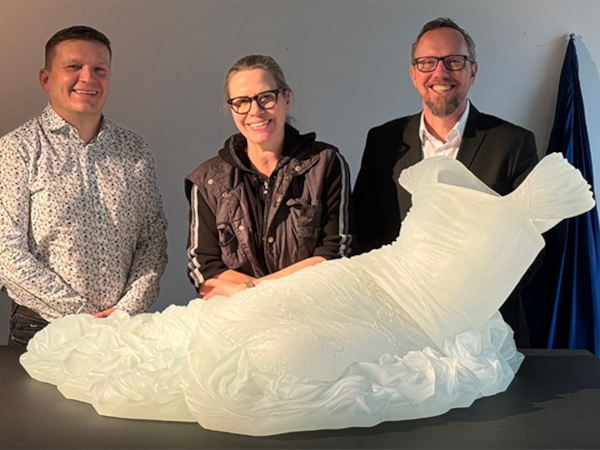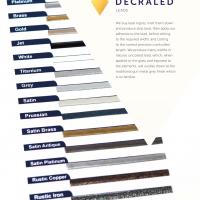Date: 7 August 2007
He ranks as one of the few courageous artists who dare to work with translucent types of image carriers.
”The transparency of glass makes it possible for me to depict several levels of thought and experiences through one picture,” explains Nabo Gass in describing his artistic use of a material that caught his fascination at a very early age.
In 1973, the 19 year-old began studying glass painting at the world-renowned Wilhelm Derix workshop on glass painting in Taunusstein, Germany. In addition to techniques, such as adding color, etching, sand blasting and leaded glazing, creative work had truly taken hold of him. Initially, his artistic drive expressed itself in painting. However, his zealousness finally encouraged him to include the transparency of glass in his creative work.
In his early works, opaque and clear glasses were placed in lead cames in traditional patterns. Then, the transparent zones began to stretch out further. Exact geometries gave way to softer, spontaneous shapes that replaced the lead cames with the glass fusing technique. Gass now uses a brush or spatula to apply up to four layers of a pulverized colored glass paste to a glass substrate. At peak temperatures of as high as 840 degrees Celsius, the layers of the paste that were applied interblend rather than melting together.
This is where specialized B 270™ glass from SCHOTT comes into play. Because the coefficient of expansion of this flat glass fits in best with the color glass masses that are added, Gass insists on using only this product for the substrates. The interesting thing is that highly transparent B 270™ glass is not only part of the broad range of SCHOTT architectural and design glasses, but is also put to use in optical applications, such as lenses.  The technique described here is then combined with another photographic sandblasting technique. Here, a photographic image is projected onto a pane of glass. The unexposed areas that are not covered up by a compound can then be processed using a sandblaster. When the compound is removed from the pane, the image that was transferred photographically onto the glass can be seen.
The technique described here is then combined with another photographic sandblasting technique. Here, a photographic image is projected onto a pane of glass. The unexposed areas that are not covered up by a compound can then be processed using a sandblaster. When the compound is removed from the pane, the image that was transferred photographically onto the glass can be seen.
Regardless of the technique he selects, the artist always remains in complete control. The illustration of his unadulterated signature is extremely important to him. For this reason, Gass insists on performing all of the steps involved in his work himself – from initial designs to mounting – at his spacious gallery studio on the shores of the Rhine River in Wiesbaden.
With pictures made of glass, three layers are applied after each other. The glass painting is found inside, flanked by sandblasted panes. In this way, picture themes overlap much like thought processes. The subjects for the glassy worlds of adventure are taken from everyday life. Shapes that originate in nature move lively to correspond with the landscapes that shine through them. A commentary on current events is presented much like a film. Virtuosic and expressive shapes often swing between concrete and abstract natures and strong colors support the elegance of the structures. The viewer is forced to shift his glance between the glassy layers and what can be seen behind them. It is, thus, possible to comprehend what is on the surface and in the background.
The glass works of art created by Nabo Gass offer worlds of adventure that are rich in content. His plea to view things in a differentiated manner is at the center of his extremely pragmatic contribution to modern glass art. In any case, Gass is keen to retain a clear, yet critical view of what matters and the dialogue that results from it.
By Dr. Hans-Peter Schwanke









Add new comment